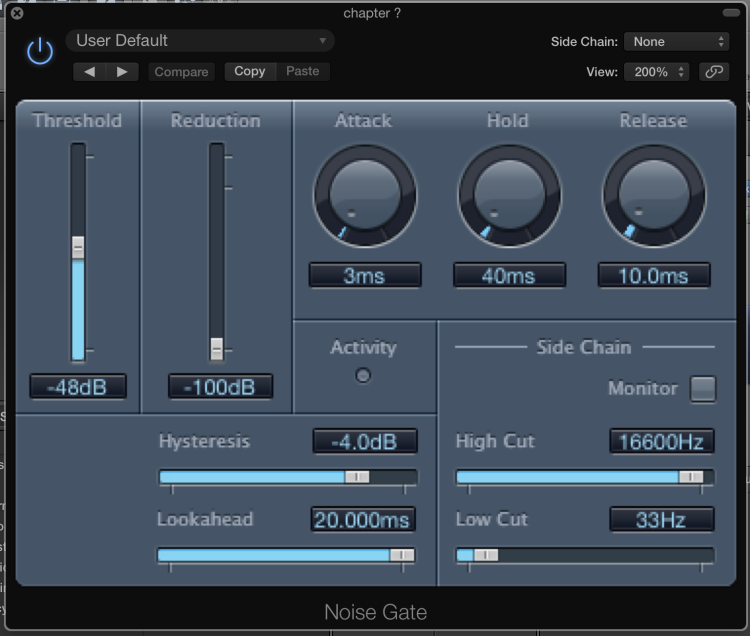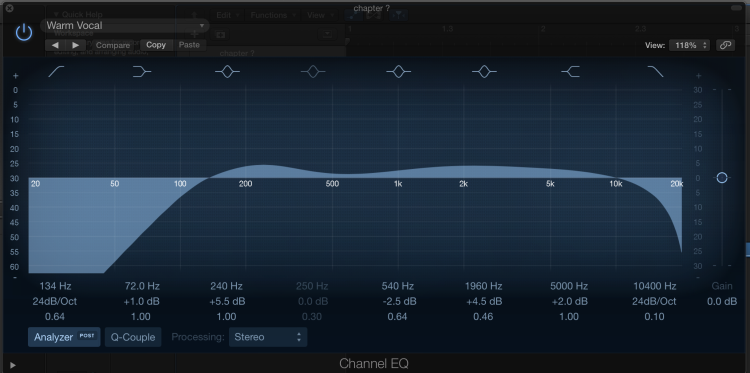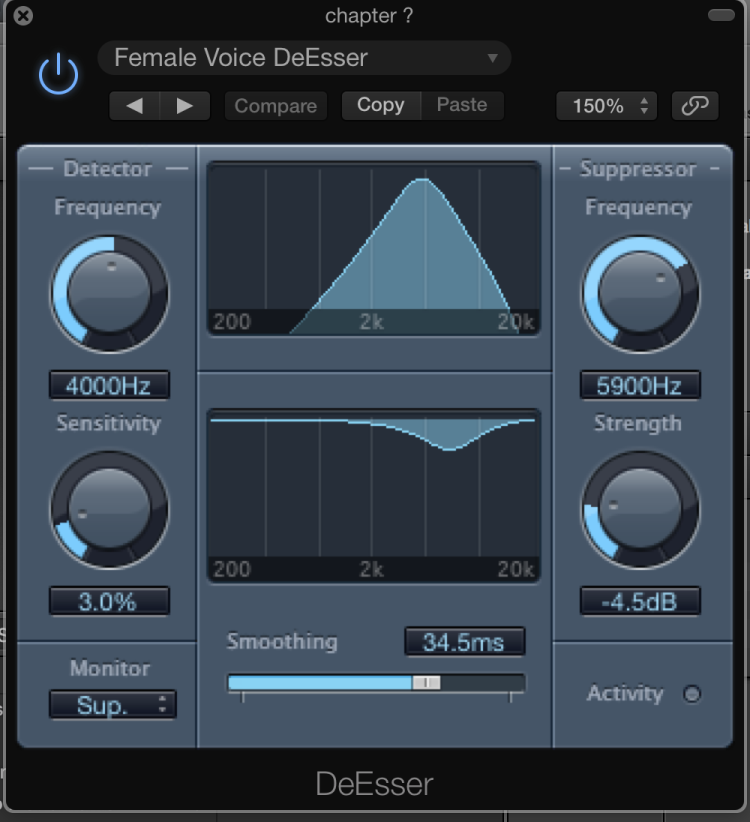As a last comment on building our sound booth and recording as well as editing the sound track, I wish to share our settings. After much experimentation, we have settled on a simple set of three audio filters using Apple Logic Pro X software.
When we started, I had an idea that our narrator’s voice should change dramatically between characters she is portraying, and I made a concerted effort to find plug-ins which could handle the task. I used both Antares and Flux, both highly rated, for voice modification. You see, I wanted to create a male voice or a youthful voice, or even separate female voices. Much like hiring different actors for the various parts.
It didn’t work. Even though these add-on filters are excellent and expansive (yes, a bit expensive also), they create a strange voice instead of a natural one. Try as I might, I could not achieve the effect I desired, and we went back to the tried and true method of voice control by the narrator.
A major goal is to eliminate any unwanted sounds as we discussed previously, and it comes down to careful editing and noise control inside the booth. There are sounds, though, which creep into the highest and the lowest frequencies no matter how careful you are. These can be controlled with the right settings on your filters.
Another issue is the dynamic range of the narrator. In our case, Janel can become hyper-charged during reading of an exciting section, and the result is a very wide range of dynamics captured faithfully by the mike. Again, this is managed by the appropriate settings of the software.
Some speakers, particularly female ones, tend to emphasize the “S” sounds of words. Good, clear speaking demands that it be so. But, it can be too obvious and a distraction as well. We use a nice little de-esser which diminishes the pop of an “S” sound without removing it. Less is better than more in this case.
For our needs, the three filters produce a clear sound which converts to a high quality MP3 and is easy on the ear as well.
To be clear, we record the narration on a track without filters and do the editing and post-processing later, outside of the studio.
Good luck on your own efforts, and I hope this series has been helpful.
Alexander Francis



